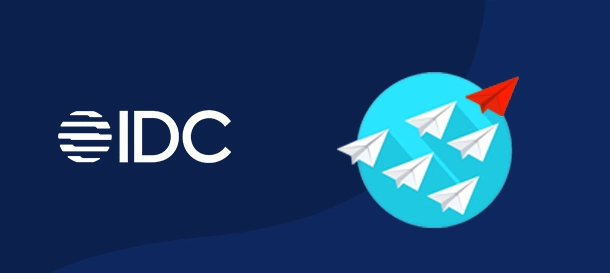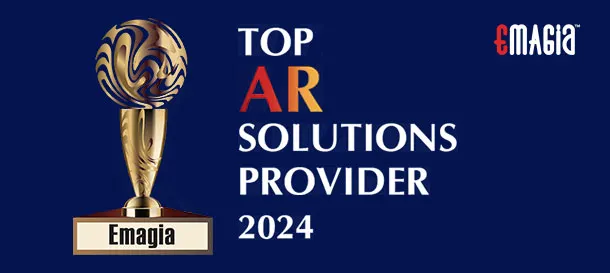Invoice matching is a critical aspect of accounts receivable (AR) management, helping businesses ensure the accuracy of their financial transactions. Accurate invoice matching not only supports efficient cash flow but also reduces errors, enhances financial transparency, and strengthens relationships with vendors and customers. In this blog, we will dive deep into the top strategies for accurate invoice matching, from the basics of the process to the latest technological advancements. We’ll also explore how tools like Emagia’s GiaDocs AI can further streamline this process for improved efficiency.
Understanding Invoice Matching
Invoice matching is the process of comparing an invoice with related documents, such as purchase orders, goods receipts, and other relevant records, to verify the accuracy of the billed amount. The goal is to ensure that the services or products ordered and received match the invoice and that all terms—like pricing, quantity, and delivery details—are correctly reflected.
The three most common types of invoice matching are:
- Two-Way Matching: This process compares the purchase order (PO) with the supplier’s invoice to ensure that the invoice details match what was agreed upon in the order. This is the simplest form of matching and is commonly used for straightforward transactions.
- Three-Way Matching: This process compares the PO, the goods receipt, and the invoice. It’s ideal for ensuring that goods ordered have been received as stated and are in the correct condition before making payment.
- Four-Way Matching: The most comprehensive approach, four-way matching, compares the PO, goods receipt, inspection report, and invoice. This method is used when quality control is essential, such as in high-value or specialized inventory.
Best Practices for Accurate Invoice Matching
Achieving accuracy in invoice matching involves adopting several best practices that can streamline the process and reduce the chances of errors:
- Implement Clear Billing Procedures: Establish a standardized invoicing and payment process across your organization to minimize errors caused by inconsistent practices. This will make invoice verification much simpler.
- Digitize Your Invoices: Moving from paper-based to electronic invoicing and payments significantly reduces the risk of errors due to manual entry. Automation ensures that data is transferred more accurately, and discrepancies can be flagged in real time.
- Integrate Accounting Systems: Connecting your accounts receivable system with your enterprise resource planning (ERP) platform allows for smoother invoice matching and faster reconciliation. This integration helps sync all necessary documents and data, streamlining the matching process.
- Maintain Vendor Relationships: Cultivating strong relationships with suppliers ensures that discrepancies can be quickly resolved. Communication with vendors regarding incorrect invoices or discrepancies can help avoid payment delays.
- Use Automated Invoice Matching Tools: Automation not only speeds up the matching process but also increases its accuracy. Tools that automatically match invoices with POs and receipts can identify discrepancies immediately, reducing the chances of human error.
Key Performance Indicators (KPIs) for Invoice Matching
To measure the efficiency of your invoice matching process, track key performance indicators (KPIs) that highlight the effectiveness of your AR practices:
- Days Sales Outstanding (DSO): DSO is a critical metric that measures the average number of days it takes to collect payments after a sale. The faster you match invoices, the lower your DSO will be.
- Average Days Delinquent (ADD): ADD indicates the average number of days invoices are overdue. By improving invoice matching, you can reduce the ADD and improve cash flow.
- Invoice Matching Accuracy: Tracking the percentage of invoices matched correctly without discrepancies is crucial. It provides insight into how effective your process is and highlights areas for improvement.
The Role of Automation in Invoice Matching
Automating the invoice matching process brings several benefits:
- Faster Processing: Automated systems streamline the matching process, enabling your team to process invoices faster and with fewer delays.
- Reduced Errors: Automation minimizes human intervention, significantly reducing the risk of manual errors such as data entry mistakes and misplaced invoices.
- Increased Efficiency: By automating repetitive tasks, employees can focus on higher-value activities, improving overall productivity.
- Better Cash Flow Management: With automated invoice matching, payments can be processed more quickly, contributing to more accurate cash flow forecasting and management.
How Emagia’s GiaDocs AI Enhances Invoice Matching
Emagia’s GiaDocs AI is an advanced tool designed to streamline and improve the invoice matching process. Here’s how it can help:
- Intelligent Data Extraction: GiaDocs AI uses Optical Character Recognition (OCR) technology to automatically extract data from invoices, reducing the need for manual data entry and minimizing human errors.
- Automated Matching: The AI system seamlessly matches invoices to related documents, such as purchase orders and goods receipts, reducing the time spent manually verifying each detail.
- Real-Time Insights: GiaDocs AI provides real-time visibility into your AR process, offering updates on invoice statuses and helping you make informed decisions faster.
- Seamless Integration: GiaDocs integrates easily with your existing ERP systems, creating a unified process that enhances efficiency and reduces the risk of errors.
By leveraging GiaDocs AI, companies can transform their accounts receivable process, making it faster, more accurate, and less reliant on manual intervention.
Common Challenges in Invoice Matching and Their Solutions
While invoice matching can seem straightforward, businesses often face challenges in the process. Here are some common issues and solutions:
- Discrepancies Between Documents: Mismatches between the PO, goods receipt, and invoice can occur, leading to delayed payments. To resolve this, it’s important to have a robust exception handling process in place. Establishing clear communication with suppliers can help quickly address discrepancies.
- Manual Data Entry Errors: One of the main sources of error in invoice matching is manual data entry. Implementing automated tools, like Emagia’s GiaDocs AI, can eliminate this problem and improve accuracy.
- Delayed Payments: Delayed payments often result from inefficient invoice matching processes. By speeding up the matching process with automation, businesses can ensure payments are made on time.
Future Trends in Invoice Matching
The future of invoice matching is likely to be shaped by new technologies and evolving business needs. Here are a few trends to watch:
- Artificial Intelligence (AI) and Machine Learning (ML): AI and ML are set to play an even greater role in invoice matching, automating more complex tasks, improving decision-making, and enhancing accuracy.
- Blockchain: Blockchain technology can offer increased security and transparency, ensuring that invoices and transactions are recorded in an immutable ledger that all parties can trust.
- Cloud-Based Solutions: Cloud platforms will continue to gain popularity, providing businesses with scalable solutions that can handle an increasing volume of invoices as companies grow.
Frequently Asked Questions (FAQs)
What is invoice matching?
Invoice matching is the process of comparing invoices to purchase orders and receipts to verify that the billed amounts are accurate before processing payments. It ensures that only valid and accurate invoices are paid.
Why is accurate invoice matching important?
Accurate invoice matching is essential for maintaining a healthy cash flow, reducing errors in financial records, and fostering good relationships with suppliers. It ensures that businesses are not overpaying or underpaying for goods and services.
What are the different types of invoice matching?
The three main types of invoice matching are:
- Two-Way Matching: Matches the purchase order with the invoice.
- Three-Way Matching: Matches the purchase order, goods receipt, and invoice.
- Four-Way Matching: Matches the purchase order, goods receipt, inspection report, and invoice.
How can automation help with invoice matching?
Automation can significantly reduce errors by eliminating manual data entry and ensuring faster, more accurate invoice matching. Automated tools also allow businesses to process invoices more quickly, improving cash flow management.
By adopting these strategies and leveraging the power of tools like Emagia’s GiaDocs AI, businesses can streamline their invoice matching process, reduce errors, and improve efficiency in accounts receivable management.








